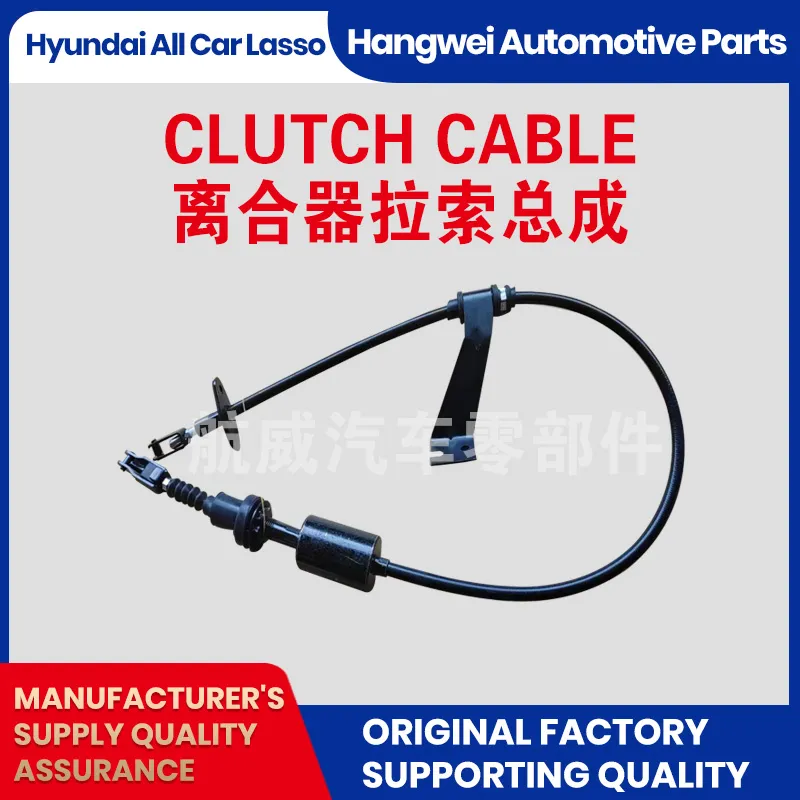Optimizing Hand Throttle Cable Performance for Enhanced Control and Smooth Operation in Vehicles
Understanding Hand Throttle Cables Function, Benefits, and Applications
In the realm of automotive engineering, the hand throttle cable plays a vital role in enhancing vehicle performance and driver control. Often found in various types of vehicles, particularly in vintage cars, motorcycles, and machinery, this simple yet effective mechanism allows drivers to manually control the engine's throttle. Understanding how hand throttle cables function, their benefits, and their applications can provide valuable insights for both enthusiasts and professionals in the automotive field.
What is a Hand Throttle Cable?
A hand throttle cable is a flexible wire cable that connects the vehicle's throttle body or carburetor to the driver-operated control lever, usually located on the steering column or the dashboard. This system allows the driver to regulate the engine's power output manually, as opposed to relying solely on the foot-operated accelerator pedal. The design typically includes a cable sheath that protects the inner wire, providing smooth operation and durability.
How Do Hand Throttle Cables Work?
The operation of a hand throttle cable is straightforward yet effective. When a driver pulls or pushes the hand lever, it moves the inner cable, which in turn adjusts the position of the throttle valve. Depending on the direction and extent of the lever's movement, the throttle opens or closes, allowing more or less air-fuel mixture into the engine. This manual control is particularly useful in situations where fine adjustments to the engine’s power output are necessary, such as during slow-speed maneuvers, off-roading, or when using equipment that requires a constant engine speed.
Benefits of Hand Throttle Cables
1. Enhanced Control One of the primary benefits of a hand throttle cable is the increased control it offers to the driver. This is especially significant in applications where precision is key, such as in racing or when operating heavy machinery.
hand throttle cable

2. Versatility Hand throttle cables can be adapted for various vehicles and applications. From classic cars seeking a vintage touch to specialized equipment in agriculture or construction, the hand throttle can be tailored to fit specific needs.
3. Ease of Maintenance Unlike more complex electronic throttle systems, hand throttle cables are relatively simple and easier to maintain. Should any issues arise, diagnosing and replacing a faulty cable is typically less complicated and less costly.
4. Increased Comfort For some drivers, particularly those who may have mobility challenges, a hand throttle can offer a more comfortable driving experience. It allows for throttle control without the need for foot operation, which may be beneficial in certain situations.
Applications of Hand Throttle Cables
Hand throttle cables have diverse applications across various industries. In automotive contexts, they are often seen in classic cars where streamlining and simplicity are valued. In motorcycles, hand throttles can provide intuitive control during challenging maneuvers. Beyond personal vehicles, hand throttle cables are frequently utilized in agricultural machinery, where operators need to maintain consistent engine speed while performing tasks such as tilling or mowing.
In aviation, some aircraft utilize hand-throttle controls for better precision during flight maneuvers. In the marine industry, hand throttle cables are standard on many boats, allowing for smooth and accurate throttle adjustments while navigating.
Conclusion
In conclusion, the hand throttle cable is an essential component that combines simplicity, control, and versatility across numerous applications. Its ability to offer manual throttle control enhances the driving experience and operational efficiency in various vehicles and equipment. As automotive technology continues to evolve, the fundamental principles of control established by hand throttle cables remain invaluable in specific contexts, preserving their relevance in modern applications. Whether in a vintage classic or a high-performance machine, hand throttle cables represent an enduring aspect of automotive engineering that bridges the gap between man and machine.
-
Workings of Clutch Pipe and Hose SystemsNewsJun.04,2025
-
The Inner Workings of Hand Brake Cable SystemsNewsJun.04,2025
-
The Secrets of Throttle and Accelerator CablesNewsJun.04,2025
-
The Hidden Lifeline of Your Transmission Gear Shift CablesNewsJun.04,2025
-
Demystifying Gear Cables and Shift LinkagesNewsJun.04,2025
-
Decoding Clutch Line Systems A Comprehensive GuideNewsJun.04,2025
